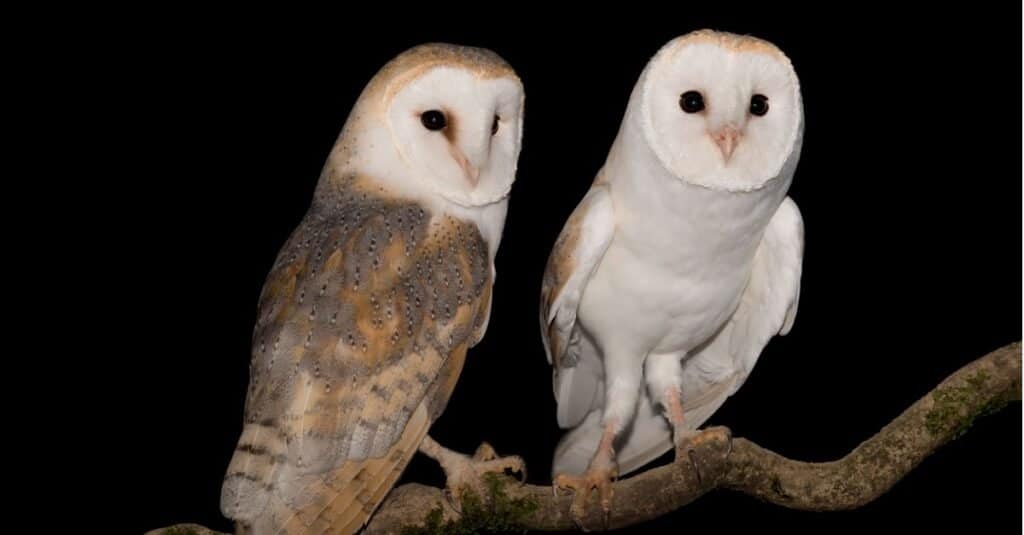Many animals can see colors like humans, but some are color-blind. In animals, the ability to see colors depends on the presence of color receptors in the eye’s retina. Cones are responsible for color perception, like red, green, and blue, while rods are more sensitive than cones, being responsible for low-light vision, which is why we can’t see colors well when it’s dark. Humans have three types of cones that allow us to see the full spectrum of light — red, blue, and green. This color perception is called trichromatic vision.
On the other hand, some animals have fewer cones or more rods. This limits the colors they can see and their night vision. In this article, we’ll explore some animals that are color-blind and the reasons they can’t see the full spectrum of light. Let’s get started!
Which Animals Are Color-Blind?
While color-blind animals may not see vibrant colors as humans can, they have other ways of perceiving the world around them. Below are just a few of the animals that are color-blind.
1. Whales

Whales can see more clearly in the dark, likely because they have more rod cells.
©iStock.com/Velvetfish
Whales have a monochromatic vision. This means they have only one type of cone cell. Hence, they see the world in different shades of gray. However, they can distinguish light from dark.
Moreover, whales can see more clearly in the dark, likely because they have more rod cells. They use echolocation to navigate their environments and search for prey. They also have tapetum lucidum, a reflective membrane that helps them see in the dark by reflecting light through the retina.
2. Dogs

Dogs rely on their other senses, such as smell and hearing, to compensate for their visual limitations.
©BIGANDT.COM/Shutterstock.com
Like most mammals, dogs are dichromats, meaning they only have two types of cone cells. When distinguishing colors, dogs are limited to seeing shades of gray, blue, and yellow, as they have difficulties processing red and green. This makes their color vision equivalent to people with red-green color blindness. Moreover, dogs have less sensitivity to changes in brightness, meaning they cannot perceive color in the same vivid tones that we can.
Dogs rely on their other senses, such as smell and hearing, to compensate for their visual limitations. They also have more rods and tapetum lucidum, the reflective cells under the retina, which allow them to see better in dim light.
3. Cats

Cats are dichromats, making them similar to color-blind humans.
©iStock.com/Mironmax Studio
Like dogs, cats are dichromats (possessing two types of cone cells), making them similar to color-blind humans. They can tell the differences between shades of blue, yellow, and red. In addition, they can tell the differences between red and green lights. However, these felines can differentiate blues from violets more than they can for colors similar to the red end of the spectrum. For example, pink may appear greener, and purple like another shade of blue. Cats are more sensitive to brightness, meaning they cannot see as many colors with the same richness of hues and saturation as humans.
To compensate for their lack of color vision, cats have tapetum lucidum, which bounces reflective light back through the retina. This allows them to see better in dimly lit conditions.
4. Owls

Owls are more sensitive to light than humans.
©iStock.com/Paolino Massimiliano Manuel
Owls are unique animals that possess some interesting characteristics. They are nocturnal, have great hearing, and can turn their heads to 270 degrees. Compared to their skull size, the eyes are abnormally large. Another unique owl characteristic is that they can’t move their eyes in any direction. Instead, they swivel their heads to look in different directions. However, owls have bad color vision.
Their keen eyesight is an asset that allows them to hunt successfully at night. Since they have more rods, owls are more sensitive to light than humans. Besides, they have fewer cones, meaning they can’t see hues as well as we can and are, therefore, color-blind. In other words, owls only see in black, white, and gray shades. Despite their poor color vision, they do not use echolocation for hunting as most color-blind animals do. Instead, they rely on their excellent night vision and can hunt prey in total darkness.
5. Raccoons

Raccoons have
tapetum lucidum,which reflects light through the retina, allowing them to see in low-light conditions.
©Mark_Sawyer/Shutterstock.com
Another nocturnal animal that is color-blind is the raccoon (Procyon lotor). Living primarily in North America’s moist woodlands, raccoons have poor long-distance vision and are considered color-blind. However, their eyes are well-adapted to discern green light and glow red in the dark.
To compensate for their poor color vision, they have tapetum lucidum, which reflects light through the retina, allowing them to see in low-light conditions. Like most color-blind animals, raccoons rely on their keen senses of smell, touch, and hearing to navigate and hunt effectively in their habitats.
Up Next:
- Can Dogs See Infrared?
- Can Cats See in the Dark, Like Night Vision?
- New Study: Zebrafish Vision Could Cure Color Blindness
The photo featured at the top of this post is © sylv1rob1/Shutterstock.com
Sources
Thank you for reading! Have some feedback for us? Contact the AZ Animals editorial team.







